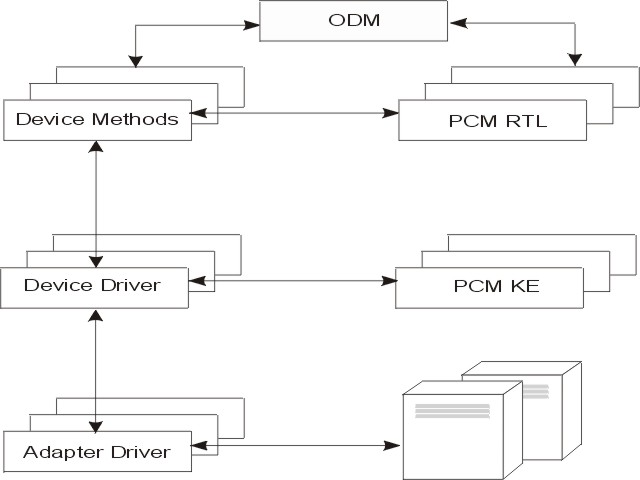Multiple Path I/O
With Multiple Path I/O (MPIO), a device can be uniquely detected through one or more physical connections, or paths.
A path-control module (PCM) provides the path management functions.
An MPIO-capable device driver can control more than one type of target device. A PCM can support one or more specific devices. Therefore, one device driver can be interfaced to multiple PCMs that control the I/O across the paths to each of the target devices.

Before a device can take advantage of MPIO, the device's driver, methods, and predefined attributes in the Object Data Manager (ODM) must be modified to support detection, configuration, and management of multiple paths. The parallel SCSI and Fibre Channel disk device drivers and their device methods support MPIO disk devices. The iSCSI disk devices are supported as MPIO devices. The Fibre Channel tape device driver and its device methods support MPIO tape devices. Also, the predefined attributes for some devices in the ODM have been modified for MPIO.
The AIX® PCM consists of: the PCM RTL configuration module and the PCM KE kernel extension. The PCM RTL is a run-time loadable module that enables the device methods to detect additional PCM KE device-specific or path ODM attributes that the PCM KE requires. The PCM RTL is loaded by a device method. One or more routines within the PCM RTL are then accessed to perform specific operations that initialize or modify PM KE variables.
The PCM KE supplies path-control management capabilities to any device driver that supports the MPIO interface. The PCM KE depends on device configuration to detect paths and communicate that information to the device driver. Each MPIO-capable device driver adds the paths to a device from its immediate parent or parents. The maintenance and scheduling of I/O across different paths is provided by the PCM KE and is not apparent to the MPIO-capable device driver.
The PCM KE can provide more than one routing algorithm, which can be selected by the user. The PCM KE also helps collect information that can be used to determine and select the best path for any I/O request. The PCM KE can select the best path based on a variety of criteria, including load balancing, connection speed, connection failure, and so on.
- Check the paths and determine which paths are currently usable for sending I/O
- Enable a path that was previously marked failed because of a temporary path fault (for example, when a cable to a device was removed and then reconnected)
- Check currently unused paths that would be used if a failover
occurred (for example, when the algorithm attribute value is
failover, the health check can test the alternate paths)
Not all disk devices and tape devices can be detected and configured using the AIX default PCMs. The AIX default PCMs consist of two path control modules, one to manage disk devices and another to mange tape devices. If your device is not detected, check with the device vendor to determine if a PCM is available for your device.